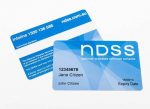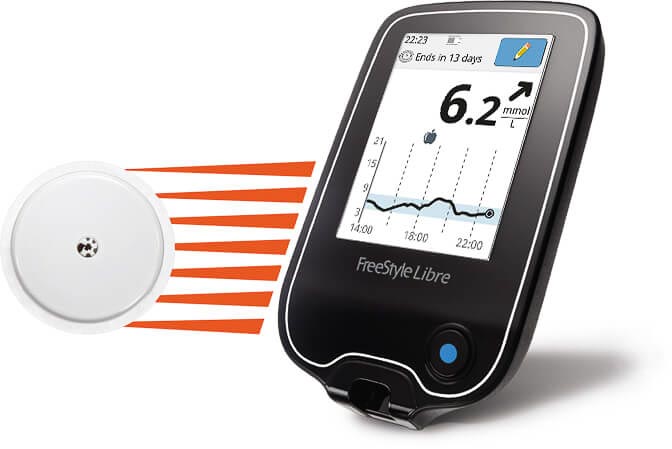Abbott Diabetes Care stirred the Australian Libre-subsidy pot again this week, and we see people in diabetes peer support groups complaining about it in various ways.
I do feel that many people have not put the pieces together and may be surprised when all the changes related to this finally come home to roost. In this article I will outline most of the pieces I’m aware of. There is a little bit of conjecture in here, but hopefully I’m clear about which bits are guesswork.
Reimbursement vs. Subsidy
Let’s just get this out of the way. Abbott have repeatedly in the past made announcements about their application for “Libre reimbursement“, and it’s interesting to see they’ve changed to talking about subsidy. Because that’s what it is to us. We were never going to get reimbursed by the government: Abbott were. From our point of view it’s just that the price we pay would be subsidised through NDSS. Congratulations to Abbott for taking this feedback on board and using clearer language.
NDSS funding for BG testing
 Let’s wind back a bit, and consider the BG strips which are subsidised by the government through NDSS. Currently there are 30 different models of BG strips, each subsidised to the same levels (starting at $17 for 100 strips, down to free for some concession card holders). Some of these strips are used with multiple meter models: at a quick count there are over 50 meter models currently supported.
Let’s wind back a bit, and consider the BG strips which are subsidised by the government through NDSS. Currently there are 30 different models of BG strips, each subsidised to the same levels (starting at $17 for 100 strips, down to free for some concession card holders). Some of these strips are used with multiple meter models: at a quick count there are over 50 meter models currently supported.
The NDSS re-bidding process
 In case you weren’t aware, through the last year there’s been a huge bidding process going on for an update to the list of BG strips (along with syringes and urinary ketone strips – no mention of ß-ketone testing). Companies were required to put in new proposals for products and pricing. This RFP (Request for Proposal) process is mentioned on the Department of Health’s website.
In case you weren’t aware, through the last year there’s been a huge bidding process going on for an update to the list of BG strips (along with syringes and urinary ketone strips – no mention of ß-ketone testing). Companies were required to put in new proposals for products and pricing. This RFP (Request for Proposal) process is mentioned on the Department of Health’s website.
This process has been dragging on. It started in September 2017. It was originally slated to have been completed by July 2018, but it has been pushed out until at least September 2018. Companies put their proposals in, and then nothing seemed to happen for ages. We’ll come back to this…
Is Libre BG-testing, or CGM?
From the outside it seems likely that Abbott have positioned the Libre as a replacement for BG tests, not as a CGM. Some people get very heated about “true” CGMs which not only continually measure, but can alert you at any point about changes in your glucose levels. The Libre does continually monitor, but only reports data when you scan (“flash”) it. So some of the people who worry about going to sleep at night due to hypos have been strident in their statements that “Libre is not CGM”. Mind you many people are using third-party devices to scan the Libre every 5 minutes, and creating their own CGMs. I started doing that in early 2017.
In any case, Abbott don’t seem to be chasing the “CGM” label for Libre, and taken on the “Flash testing” label. NDSS funding for CGM (currently 100% subsidy only for people under 21) seems to be a separate topic (and one that’s going to get more pressure in the lead-up to the next Federal election).
Abbott seem to have positioned Libre as the core of their business model. I suspect that they’ve put their Libre “reimbursement” application in as part of this whole RFP process, and even set their pricing so they’ll make less money from their BG strips to make it attractive to the bean-counters (also given that they’ll be claiming that strip consumption will go down when people scan instead).
Abbott’s August statement
This week Abbott sent an announcement out on various channels, basically saying that they were still waiting for the government to decide about Libre funding. They quoted the Department’s website (linked above) where it says:
“Following completion of this process, the Department provided feedback to the sponsor on the results of the evaluation. The sponsor has subsequently provided a revised submission which is being assessed by the Department through a similar process along with the feedback from the original public consultation.”
Note that it doesn’t say when this feedback and revised submission were provided. I suspect it was some months ago.
It may be relevant that I gather other BG strip manufacturers were asked to put in revised proposals somewhere along the way too. If a big supplier put in low bids for strip pricing, would you be surprised if the government went back to other suppliers and asked them why their prices were higher than the competition’s?
Manufacturers don’t make money through meters
Historically it’s been easy to get free meters in Australia: in general just contact the supplier and ask for one. It’s common knowledge that they make their money through selling the strips for the meters, not through the meters themselves.
It’s reasonable to expect that once the new NDSS list is published there will be two major changes:
- There will probably be a smaller choice of strips through NDSS. The Department has already highlighted this possibility. The smaller players will probably have been eliminated from the bidding process.
- There might be no decrease in the price for us end-users, but the government are sure to have reduced the price they are paying to the manufacturers.
I do think it’s reasonable to assume that in the future manufacturers will be less inclined to give away free meters at the drop of a hat: their profit margin on strips will have been reduced, even though the manufacturers on the new (smaller) list will each be hoping for a larger slice of the pie.
The process continues…
The Department currently says:
“The RFP process commenced on 26 September 2017. Evaluation of proposals is continuing, with a final outcome expected in the third quarter of 2018.
Upon finalisation of the RFP process, a revised list of BGTS, syringe and urinary ketone test strip products will be available through the NDSS from 1 December 2018.”
Originally it had said “from 1 July 2018”. So for now we have to just wait and see. I don’t expect to see any Libre subsidy action for a while.
Meanwhile, with consumable funding-subsidies in limbo, companies do keep rolling product updates out. As examples:
- Abbott introduced their LibreLink phone-based scanning product to Australia back in June.
- As long as they use strips that are on NDSS already, new meters with TGA approval will be introduced to market. We’ve seen some of these appear over the last few months, and there will presumably be more.


re no mention of ß-ketone testing
That’s coz the ketone test strips are not subsidised by the NDSS. The RRP is about $10/box – some places charge less, some charge more
Slightly unrelated, but these subsidies the government are paying for seem to be a bit of scam. Have you noticed that iHealth are selling their strips at the matched subsidised cost, only they are not on NDSS? (I’m not 100% on this, but think this is the case) Seems like all these big companies can easily afford to reduce their prices significantly. Those who don’t get on the ndss may choose to sell at equivalent prices…
As far as I can see iHealth sell their non-subsidised strips at $16.95 for 50, which is twice the NDSS rate.
For people who had severe ketoacidosis which will continue to be a risk blood keytone measurement is essential being more accurate than urine testing. Therefore keytone testing is just as important as blood glucose measurement and supply of keytone strips should be subsidised also for diabetics on the NDSS.